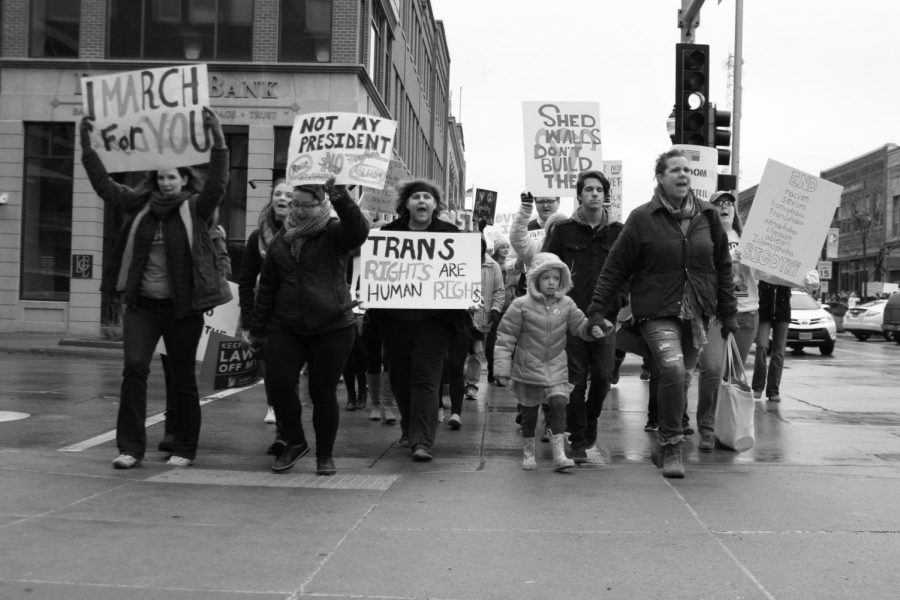Thousands across South Dakota take part in Women’s March
January 25, 2017
An estimated 5,300 men and women across South Dakota took part in the Jan. 21 Women’s March on Washington Saturday.
The march was part of a national grassroots effort of independent coordinators. More than 500 marches were held in the United States, with more than 3.3 million people in attendance nationally. The marches in South Dakota took place in Pierre, Rapid City, Vermillion and Sioux Falls.
The Sioux Falls march was the largest, consisting of about 3,300 people. It began at Calvary Cathedral at 10:00 a.m. and concluded in front of City Hall an hour later. This was followed by a coffee session at Icon Lounge.
Marchers carried signs and chanted throughout downtown Sioux Falls to show solidarity with women, the LGBT+ community, people of color, people of diverse faiths and other marginalized groups. The march also advocated for women’s reproductive rights and an end to domestic violence.
Those in attendance wore pink hats with cat ears they called “Pussyhats,” a reference to lewd comments made by President Donald Trump in a leaked audio tape from Access Hollywood.
The South Dakota State Feminist Equality Movement (FEM) and the Gender and Sexualities Alliance (GSA) had 12 members present in the march. The groups carpooled together for the event, leaving Brookings at 7:30 a.m. the morning of the march.
“I think that everything that FEM stands for came out in the march,” Annelieke Sinnema, president of FEM and sociology graduate student, said. “It was just really powerful to hear the speakers at the march and see so many people gathered in one place for this with South Dakota being a red state.”
Speakers included Native American artist Jennifer White, who spoke about Native women in South Dakota, women’s activist Libby Trammel, who spoke about domestic violence, and Former State Rep. Paula Hawks (D – District 9) who spoke about women in politics.
Kadyn Wittman and Kelly A. Sullivan coordinated the event with Leaders Engaged and Determined (LEAD), a Facebook group created following the election cycle last year. The pair coordinated the event for about six weeks and had initially only hoped for about 200-250 marchers.
“We didn’t coordinate this as a response to Trump’s statements and actions, but in spite of them,” Wittman said. “We really wanted to create a movement and space where people could come together to support women from their community and diverse groups, while voicing their concerns following the election.”
However, not all women agree with the Women’s March. Madison Jones, a freshman pre-nursing major, said she doesn’t feel women today need feminism.
“I would completely agree with protesting for women from countries that don’t have as many rights as we do here, but I don’t feel like the women were protesting for those people,” Jones said. “Personally, I feel like I can do whatever I want as a woman in today’s world.”
Sinnema continues to believe that feminism is needed in today’s world. Women’s issues will become more important over the next four years, Sinnema said.
“I think that we really need to look at issues like reproductive rights and how our bodies are being regulated,” Sinnema said. “President Trump already issued a new executive order restricting abortion just after being inaugurated. I don’t even feel comfortable walking to my car at night without my keys in my hand. Reasons like that is why we need the Women’s March.”
Sinnema said FEM looks forward to opportunites like the Women’s March in the future.
























